Celebrating, Analyzing, and Resurrecting Fillmore!
On November 12, 2019, American streaming services welcomed Disney Plus (also known as Disney+). The service’s giant library contains almost every Disney feature film ever made, including all 60 animated films. It hosts several non-Disney family classics, including the Home Alone franchise, Mrs. Doubtfire, and The Princess Bride.
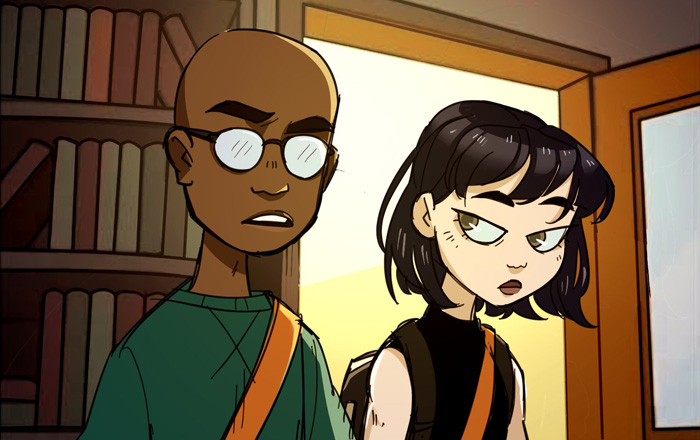
For kid and adult viewers alike, Disney Plus hosts several live-action and animated series. Several of these, such as Disney’s Doug, Ducktales, and Recess, are particularly geared toward nostalgic adults who grew up in the 1980s-early 2000s. More nostalgic series and reboots come out or are promoted every day. For instance, 2022 promises a reboot of the ’80s classic Chip and Dale: Rescue Rangers. However, there is one nostalgic animated series that hasn’t graced Disney Plus yet. It can’t be found on any streaming service, on DVD, or on iTunes. That series is Fillmore!
Created by Scott M. Gimple, Fillmore! was originally an ABC cartoon series, part of the ABC One Saturday morning block. It originally ran from 2002-2004, only two seasons and 26 episodes. After its cancellation, it maintained a small but vocal fan base. Most of that fanbase remains almost twenty years later, indicating Fillmore! deserves a revival and a chance to impact new audiences.
The Rise and Fall of Fillmore!
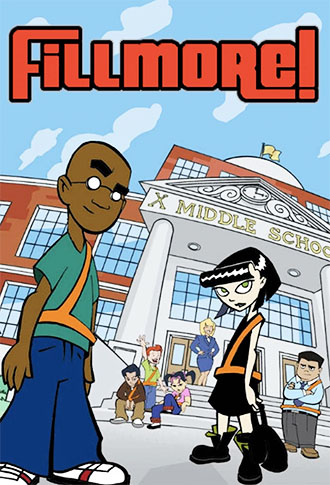
In its heyday, Fillmore! was popular with the kids in its target audience, plus the parents who might watch alongside them. This was likely due to many pop culture references from the ’70s, ’80s, and ’90s. Popularity also stemmed from the show’s format and “flavor”; it’s a send-up of the crime-solving and true crime shows parents enjoy. Many fans have called Fillmore! “CSI for kids.”
Indeed, the series feels as close to a gritty crime show as Disney can go. Its setting, X Middle School, functions more as a bustling “inner city” than your average middle school in Anytown, USA. The series stars are officers in X’s safety patrol, but these officers are not student crossing guards or hall monitors. They are the sixth through eighth grade equivalents of law enforcement, chasing down middle school “criminals” engaged in everything from “boosting” school supplies to sabotaging grades and projects or “murdering” the science lab’s tarantula. The safety patrol has its own office, and its Junior Commissioner, Officer Vallejo, acts much like a stereotypical Brooklyn police chief. Well he might, because overzealous Principal Dawn S. Folsom is always breathing down his neck, much like a stereotypical mayor or district attorney.
Additionally, the characters within Fillmore! are much smarter, more mature, and more developed than normal for animated kids’ shows, especially Disney ones. Again, this is partially because the main characters spend their time solving crimes. Even without that though, there is a sense the X Middle School student body is wise beyond its years. The school culture dictates that when crime happens, everybody feels it. Everybody stands to get hurt, or conversely, benefit from ill-gotten gains. Thus, friendships are deep, or at least more multifaceted than middle school friendships get in real life. Adversarial relationships can turn ugly fast, and the bonds formed through student clubs and extracurricular activities are tight, whether for good or ill. Adults like Principal Folsom, Vice-Principal Raycliffe, and teachers are ostensibly around to help, but they’re not called on often. Students are more apt to solve their problems alone, partly because they can and partly because getting adults involved means making tricky situations worse. At times, adult involvement actually means injustice, such as when Folsom tries to enact zero tolerance policies that might work for some students, but drive others deeper into troublemaking, or harm the innocent.
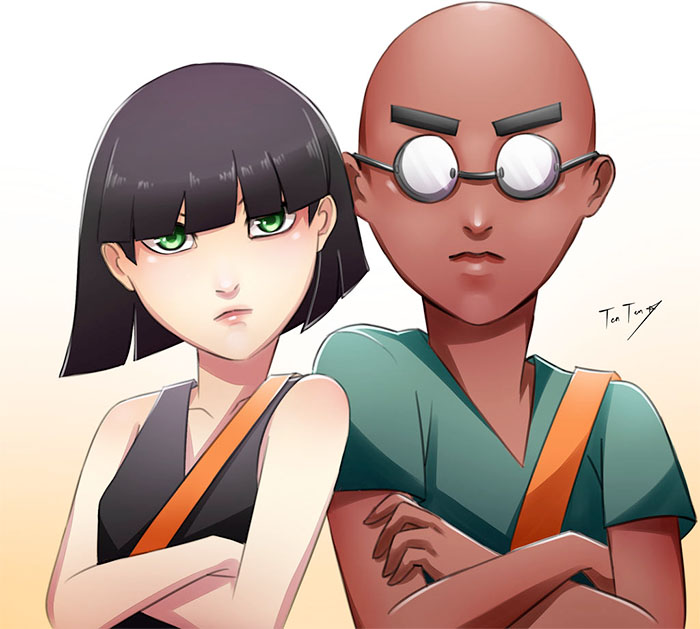
With this setup, Fillmore! fans of all ages still wonder why the series tanked after a mere 26 episodes. Indeed, on forums like YouTube, one can still find fans petitioning for a revival. But the little knowledge we have indicates the greatest strengths of Fillmore! were also its greatest weaknesses. That is, Scott M. Gimple and others acknowledge the show was cancelled well before its time. But they also acknowledge the cop show format and pop culture references were probably too grown up for the target audience. Failing that, a lot of the references and humor may have flown over kids’ heads because of their generations. Additionally, Fillmore! was the only show of its kind on ABC or Disney, and none like it have been seen on these or other kid-friendly networks since. Outside the niche, there simply was not a market for a kid- and family-friendly crime show, particularly an animated one. Had there been a market, it’s possible the creators could’ve run out of plotlines before the show ran out of steam. After all, there are only so many crime types one can make kid friendly without bordering on the ridiculous. Plus, Fillmore, Ingrid, Vallejo, and others were much too savvy and intelligent to bother with completely “aged down” versions of crimes, such as, “Who stole Johnny’s lunch money for the fourth time this week?”
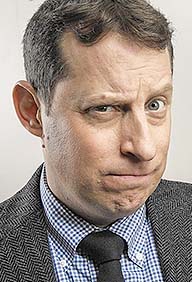
Yet this is not to say Fillmore! is, or should be, consigned to the dustbin of television history. In an era of revivals, reboots, offshoots, and spinoffs, it’s entirely possible this “kid cop miniseries” could be brought back. It’s even more possible Fillmore! could see a reboot, and a more successful one than most reboots. However, for Fillmore! to succeed again, its creators and fans need to examine what made it successful the first time. Afterward, we should examine what should or shouldn’t do to make a new incarnation successful, maybe even a hit.
Cartoon Culture Meets Real Life
Most animated shows stay within their own worlds. Bluffington of Doug, Elwood City of Arthur, or Sheltered Shrubs of As Told By Ginger may look and act like real-life suburbia, but you won’t often find real cultural references therein. The closest you’ll get are what TV Tropes calls Lawyer-Friendly Cameos, or substitutes used because a show’s creators can’t use the real references without permission. You might hear and see Henry Skreever instead of Harry Potter, or Dark Bunny and Bionic Bunny instead of Batman and Superman.
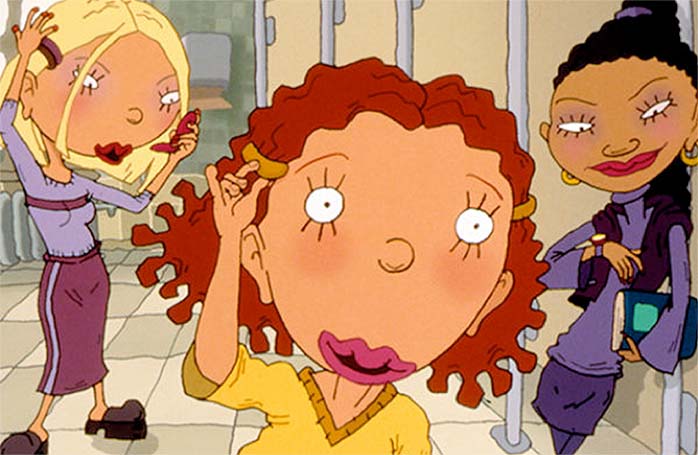
Within Fillmore!, you’ll find a few such cameos, too. An episode focusing on a virtual pet’s kidnapping uses the brand Wamahoozagootchi instead of Tamagotchi or NeoPet. One episode has Red Robins and Pioneer Lasses standing in for the Girl Scouts. But in Fillmore!, viewers are just as likely to find real references. One of the best examples is a sly one, found in character names. If last names like Fillmore, Third, Tehama, and Vallejo sound familiar, that’s because they’re also street names in San Francisco, California. In fact, Scott Gimple named all his main characters after San Francisco streets or landmarks. A lot of the minor characters have this trait, too. At least two of X Middle School’s teachers, Ms. Cornwall and Mr. Geary, have San Francisco streets as last names. One juvenile delinquent, Tony Clementina, could be named for Clementina Towers, a San Francisco apartment complex.
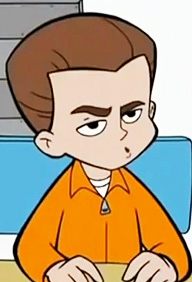
Other references are more overt, even if their originators aren’t named. For example, the pilot “To Mar A Stall” features Randal Julian, or Randal the Vandal. This student has “tagged” every bathroom at X, excluding the one in the teachers’ lounge, with permanent markers, using his graffiti artist name Flava Sava. As a result, he’s “in a state of permanent detention out by the athletic field,” having his classes piped in through closed-circuit TV. When Fillmore and his partner Ingrid go to question Randal about a new tagger at large, his detention setup reads as solitary confinement. More importantly, Randal’s voice and mannerisms are extremely reminiscent of Hannibal Lecter in Silence of the Lambs. The fact he wears an actual, student-size prison jumpsuit and never breaks flat affect ups the grown-up “creep factor.”
As noted, viewers can also find real-life references in Fillmore’s cop show format, as well as the crimes and motives. Some of these are not as adult as the above Silence of the Lambs plot, but kids and adults can unite in their understanding of them. A great example is the episode “Test of the Tested,” wherein someone steals all the answer sheets for the S.A.T.T.Y. 9 test. The test is a send-up of the standardized, high-stakes tests American kids and teens are subjected to every year. For an adult, it could stand in for the SATs themselves; for a kid, the S.A.T.T.Y 9 could be an End of Grade, End of Course, or benchmark test. The reference itself doesn’t matter. What does, are the stress and the stakes. X Middle School’s students find this test extremely stressful, and are terrified of taking it again if the answer sheets aren’t recovered. We hear that one student saw spots while taking the test, broke out in a cold sweat, and developed a spontaneous French accent. This is played for laughs to a point, but kids who’ve been through high stakes tests might not find it quite as funny as it’s meant to be.
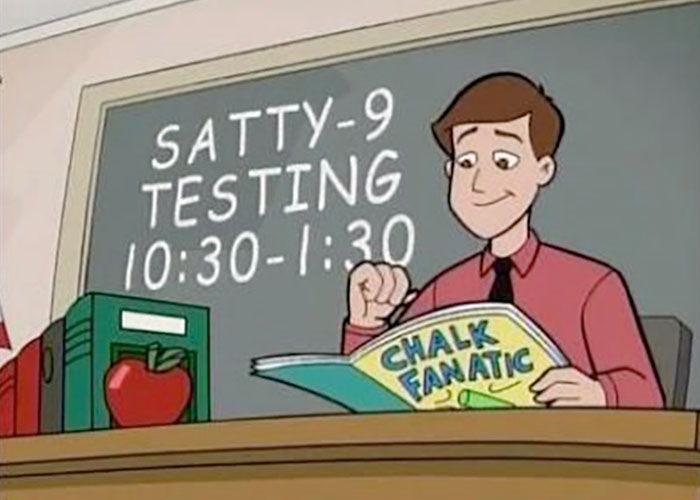
Plenty of X denizens aren’t laughing, either. Folsom’s ready to disband the safety patrol over the case because Fillmore, Ingrid, and their team have no leads. Since the sheets were stolen, her phone has rung off the hook, such that “I hear it in my sleep…I add milk to my crisped rice cereal and it SOUNDS LIKE MY PHONE!” Folsom, usually little more than a bombastic pain, stands in for the millions of real teachers and administrators who have to handle adult fallout from standardized testing–and that’s when testing has no hitches. Heaven forbid something really go wrong.
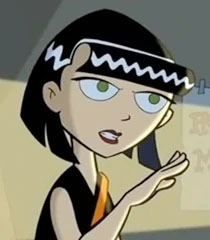
As for the students, one student in particular is struggling. Ingrid Third is not only a safety patrol officer, but the smartest student in school. Thus, she has more on her plate than her fellow officers. Not only is she counted on to crack the case, but Folsom is holding Ingrid and her guaranteed stellar scores up as pawns. In other words, Folsom can point to Ingrid as a reason her school is the best, and thus, probably deserves the best feedback and funding from higher-ups. But for that to happen, Ingrid’s score has to stand. If she has to take the test again, Folsom worries she might be too stressed to do well. Never mind the other, more “average” students who are in the same tough spot.
Ingrid’s real struggle, though, doesn’t come from her test score. While watching a suspect’s interrogation from behind a two-way mirror, she confesses to Fillmore she hopes the answer sheets stay missing. She might’ve breezed through the test, but she knows plenty of kids who didn’t. They’re smart, she says, just not in ways that show up in a standardized test score. Ingrid specifically mentions Seth, a kid she’s in class with. He’s incredibly creative, known for “cool little cartoons about a pig named Smagoogie.” Seth also studied harder than almost anyone, showing up to prep classes and worrying about letting his parents and teachers down. Ingrid argues that kids like Seth don’t deserve to be known and defined by test scores–scores that, because they don’t test well, would likely brand them as dumb or lazy. Thus, if the safety patrol finds a culprit before the adults do, Ingrid is ready to look the other way.
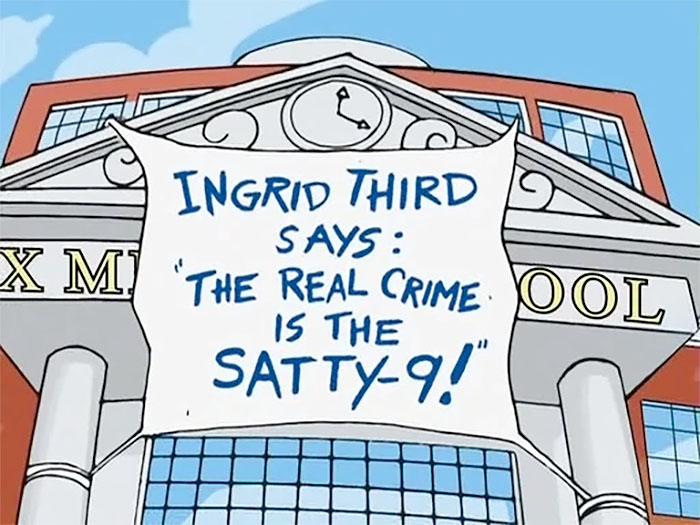
Some detractors might dismiss “Test of the Tested” as the show creators’ way of blasting standardized testing, and viewers can certainly read it as such. Beyond that though, kids and adults can unite behind not only the testing references, but what they mean. Adults, particularly those in the educational field, have likely heard Ingrid’s arguments against standardized or high-stakes testing, or have made them themselves. They can help young viewers work through Ingrid’s choice. In what ways would she be justified if she let the answer sheets stay missing, and in what ways would she be wrong (hurting classmates by forcing them to retake the test, giving the nod to stealing)? As for young viewers, they can put themselves in Ingrid’s shoes, and get behind Fillmore’s response to the test. He sympathizes with his partner, but suggests more ethical ways she can take a stand, such as protesting, writing or speaking directly to adults, or making protest art, such as visual pieces, music and lyrics, or creative writing. In the end, when a culprit is caught, kids and adults can both root for justice and examine ways to bring that same justice to the real world.
Multifaceted Characters and Plots
One of the best ways Fillmore! stands out is its environment. X Middle School is said to be one of the biggest and most diverse in the country. TV Tropes calls it an Elaborate University High, meaning it’s called a middle school in deference to the target audience and the characters’ ages. In practice though, X Middle School reads more like a high school or college. It’s home to all the usual classes and sports like football and baseball, and a lot of common clubs, like chess club, book club, student council, and various activity committees. Additionally, X hosts some extremely unique clubs and offshoots. Just to name a few, they have an RC car club, a model train club, a knitting club, and a sandwich club. They also have a yoga club and studio in addition to traditional sports, and their art club has an alternative group, the Starving Renoirs. Their drama club has offshoots that focus on Shakespeare or miming.
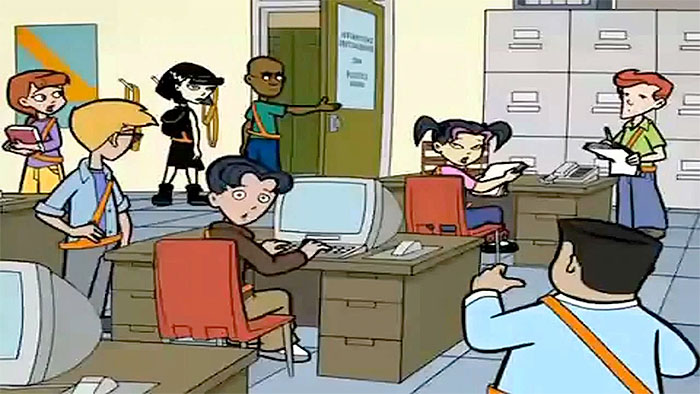
Inclusion Before it Was Cool
This huge, multifaceted environment gives rise to plenty of diverse characters that were well ahead of the show’s time. When we say “diverse,” we mean it in several ways. Diversity does include characteristics like race and heritage. In fact, the main characters, the safety patrol, are mostly minorities. Fillmore is Black, and Ingrid reads Caucasian, but is at least half Japanese. She may have other Asian heritage, and her green eyes point to European ancestry. Vallejo’s last name indicates he’s Latino, specifically Spanish. Karen Tehama, the team’s version of a forensics tech, has a First Nations last name, but fans also speculate she could have Chinese heritage. Joseph Anza is Italian, and although Officer Danny O’Farrell is Caucasian, his green eyes, red hair, and fondness for kilts indicate he’s deeply in touch with Scots-Irish heritage.
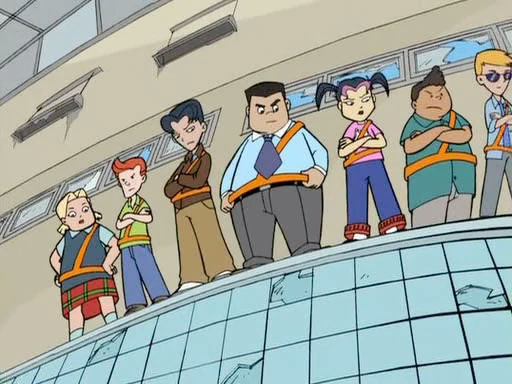
As for other students, many of the ones in prominent speaking roles are also Black or Brown, or have indicators of non-White, Anglo-Saxon Protestant ancestry. One student, featured once and seen other times in prominent scenes, uses a wheelchair, and a quick scene shows a blind artist with a seeing-eye miniature horse. Religion and LGBTQ+ affiliations aren’t discussed, but viewers might catch clues like girls wearing hijabs or head coverings in the background. Over time, viewers and fans have also coded O’Farrell, as well as some guest stars like chess champion Nelson Kelloch, as LGBTQ.
A Three-Dimensional Student Body
Such constant and inclusive diversity was well ahead of its time, but Fillmore’s characters and plots are highly diverse in other ways. That is, in other animated shows like Recess or Doug, young viewers find characters who fit specific labels–and each label goes to one character. A show will have one smart character, one athletic character, one computer-loving character, and the list goes on. In Fillmore, the opposite is the case. X Middle School hosts the most well-rounded animated student body on television.
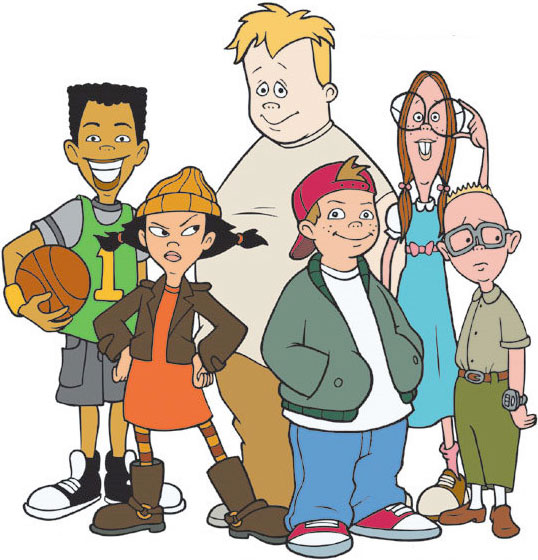
As usual, viewers can start with the safety patrol itself. Cornelius Fillmore, protagonist, is not only a safety officer, but a former delinquent with a long rap sheet, atoning for his actions. But Fillmore’s not a stereotypical, rough-edged troublemaker with no friends or from a tough home. He has loving parents and, while he’s an only child, notes he has “a dog, a good one.” He’s also close to his pet fish–first Thelonius, then Miles. These names indicate Fillmore likes jazz. And although he’s clearly an animal-lover, he’s also quite sociable, both on the “wrong” and “right” sides of middle school law. He’s a champion mini-golfer and King of the Cafetorium (cafeteria and auditorium), meaning he’s a competitive eater. Additionally, references that Fillmore makes to his grandma teaching him to make mustard greens and hosting a weekly Sunday diner indicates he enjoys soul food and is in touch with Black culture.
The guest star and secondary characters might be even more diverse than the safety patrol. One episode, “Of Slain Kings on Checkered Fields,” features Warren Foote, AKA Checkmatey. Checkmatey is the school chess champ, and as Folsom says, “He’s brash, he’s controversial, he’s in your face.” Assigned to guard Checkmatey from threats and a kidnapping before a tournament, Fillmore and Ingrid find out the blonde, blue-eyed white kid fancies himself an Eminem-like rap star. They also find out he’s known more for his mouth and lack of filter than his chess skills, when he continually hits on Ingrid (as much as he can for a Disney show).
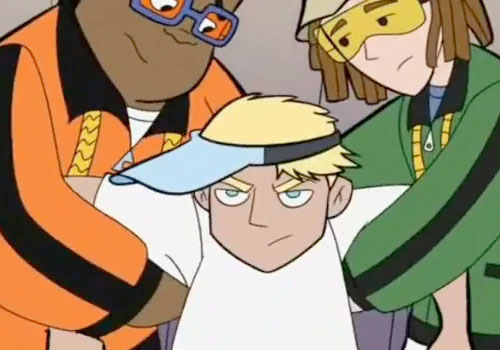
Eventually, the partners discover Checkmatey uses his rap star persona and beat-boxing entourage to hide his insecurities. In fact, he’s so insecure he kidnapped himself and left his own threats. Fillmore is able to use this as an “in,” letting Checkmatey his attitude and rhymes are awful (“Dude, you rhymed ‘bomb’ with ‘wisdom.’ That is pathetic.”) If Checkmatey fesses up and lets his guard down, focusing on chess, he’ll find he’s liked for himself and able to win or lose fairly, rather than using his rap and brashness to intimidate opponents. Fortunately, Checkmatey takes this advice, so Fillmore and Ingrid are able to both solve a crime and help a student in lasting ways.
Throughout Fillmore!, viewers find even the criminals can be diverse, in their methods and motives. Many times, this incites sympathy, if not excuses, for each episode’s “bad guys.” It can even incite empathy. This writer, a huge bookworm, remembers feeling empathetic–and thus, more circumspect about her thoughts and feelings–after seeing an episode where X’s put-upon book club robbed the library of its novels. Other viewers are apt to feel empathy as well, whether that’s because of their own situations or universal emotions the characters feel.
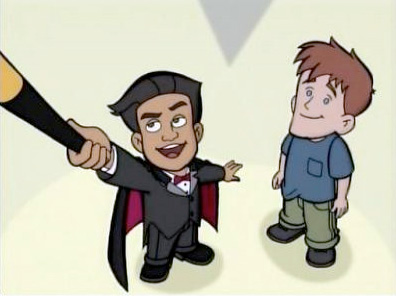
Perhaps the best episode to deal with these universal emotions is “Foes Don’t Forgive.” During the school talent show, student Dewey Hubble is called on to participate in Linus Santiago’s magic trick. Santiago, as he’s known, makes Dewey’s robotic dog Barcode disappear–and he can’t get it back. Santiago, like Fillmore, is a reformed problem student with a long rap sheet. But he claims learning magic reformed him, and so he can’t give away the secret of his trick, even if Folsom demands it. If Santiago won’t give away the secret, or if Fillmore and Ingrid can’t find out who really took Barcode, Santiago will be expelled.
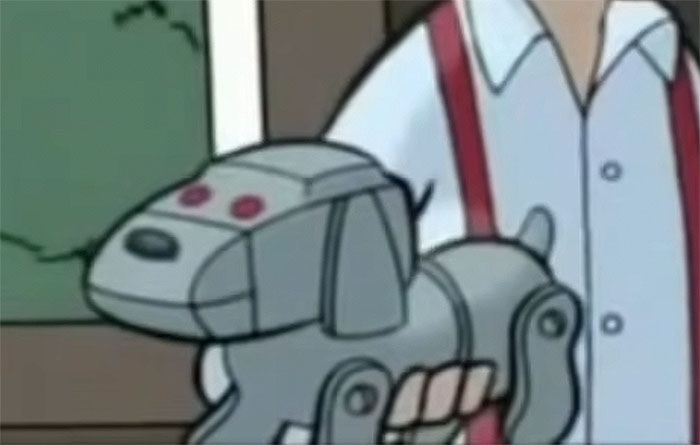
The episode is built on a formula viewers quickly learned to enjoy. It involves several false leads, including a signature chase with a suspect in an obscuring dark hoodie (who doesn’t turn out to be whodunit). There are some nods to complex middle school drama, like the potential breakdown of Santiago’s relationship with girlfriend and “lovely assistant” Rita. And of course, victim Dewey has specific, and mature, reasons for wanting Barcode back. It turns out Barcode was Dewey’s ticket to getting a real dog. He hasn’t been the most responsible kid in the past, but his mom promised if he could keep Barcode in one piece for six months, she’d let him have a real puppy. In other words, Dewey is not just a middle school kid who lost a toy. He’s a kid who longs for a pet and may have lost his one chance. Any kid who wants a pet, or any parent who’s had their child ask for one and had to say no, can sympathize.
With expulsion and pet loss on the table, Fillmore and Ingrid are working with pretty high stakes, made higher because they have no leads except those that point to Santiago. Yet for Fillmore, the evidence is a little too neat to add up. So he and Ingrid head back to Dewey’s house, where he’s hanging out with new friend Kip Fontanello. Kip is a shy, lonely kid, but ever since the talent show, he and Dewey have become best pals. In fact, Dewey is Kip’s only friend, except for his ventriloquist dummy Otto. Fillmore and Ingrid haven’t found this suspicious so far. But when they find Barcode’s abandoned collar and return it to Dewey, they discover the collar has a push-button action that causes Barcode to bark. And Barcode is indeed barking–from Kip’s closet.
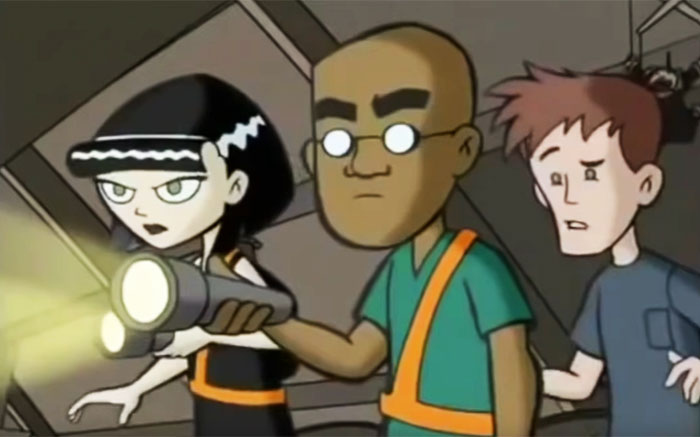
Kip snatches Barcode and runs into the Hubble’s attic, Dewey, Fillmore, and Ingrid in pursuit. When confronted, he tearfully explains the puppy Dewey was promised was from his dog’s litter. While Kip was okay with this at first, he got attached to the puppies. “Roosevelt…Churchill…Spiccoli. They became my best friends. They’re a part of me! And now, when my mom finds out, I’m gonna lose all of them!” Viewers will quickly recognize that Kip’s loneliness doesn’t excuse him, and that as Fillmore says, “The way you treat people, it makes sense you only hang out with dummies and dogs. Dewey acted like a friend, and you treated him like a chump.” But viewers of all ages will also recognize that while Kip had a better choice, he had solid reasons for feeling as he did. They may root for Dewey to stand up for Kip, so that even if he loses one puppy, he will get to keep another. Or they may recognize Dewey’s mature gesture of friendship when he says, “[If you had told me], I’d have let you keep Spiccoli” (presumably Kip’s favorite). No matter what they hope happens after the fact though, viewers will recognize Kip, and other show “criminals,” are not hopeless or hardened. Often, they live out the adage “hurt people, hurt people.” This can inspire real-world empathy and critical thinking.
Intelligent Problem-Solving Methods
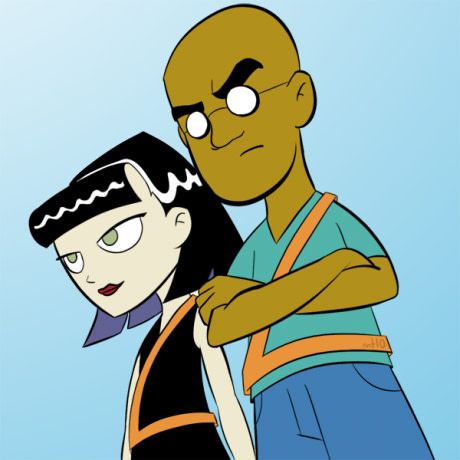
At face value, Fillmore! looks like a show about kids solving simple mysteries. However, not only are the mysteries more complex than one might expect, the way of solving them is more complex. Fillmore! not only shows mystery-solving as entertainment. It shows how the mysteries are solved. The intelligence and creativity of the methods are impressive for the show’s demographic. And like the multifaceted characters, these methods can help young viewers develop critical thinking skills.
This trend starts with the pilot, “To Mar a Stall.” Per the norm, Fillmore and Ingrid have no leads for most of the episode. However, Ingrid spots a discrepancy in the handwriting of the bathroom tagger that shows he or she is left-handed. Rather than just tell Fillmore, “We’re looking for a left-handed person,” Ingrid explains how she knows this. “A left-handed person has a tendency to drag their hand over the area they just wrote,” she says. The viewers can see this causes a smear, which would expose the tagger as left-handed, except the tagger doesn’t leave a smear. Ergo, the tagger is writing backwards, being extra careful. Plus, careful or not, he or she probably has a red mark or smear on one of their hands or wrists. Viewers can take this information and start looking more closely at characters our protagonists haven’t suspected yet. This might well lead them to the culprit, Robin Spencer. Head of the Bathroom Steering Committee, Robin defaced brand new stalls to show that the brushed steel ones she campaigned for, but didn’t get, were necessary.
Sometimes the critical thinking angle pops up in the subplot of an episode, as in “Next Stop, Armageddon.” Ingrid and Fillmore have been assigned after school convention duty, and are on the trail of a saboteur who ruined one of the model train club’s extensive, detailed layouts. The crime is treated exactly like a multi-vehicle car accident, with implications of vehicular manslaughter and irreversible property damage. As with a car accident, the finger points to another “driver” at first–a member of the rival RC car club. Viewers are meant to focus on the two clubs and the rivalry, namely the model train club’s love of nostalgia vs. the RC club’s promotion of technology and innovation. However, the main plot gets interrupted as Fillmore grieves his recently departed fish Thelonius.
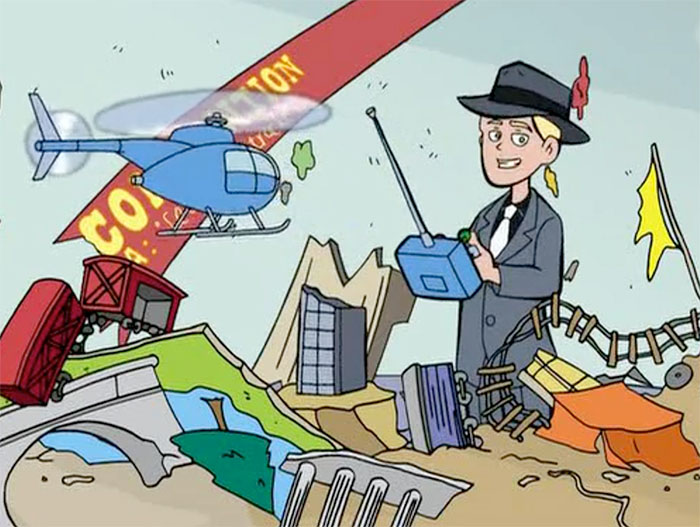
Part of the fish angle is played for laughs, as O’Farrell keeps bringing Fillmore new fish–and keeping and naming them when Fillmore says, “No, thanks.” But Ingrid knows the situation is serious, and like any seasoned cop, she knows when her partner needs her, even if he won’t admit it. She urges Fillmore to deal with his grief, offering him a book on the subject and telling him it’s okay to mourn his pet. Fillmore rebuffs her efforts, digging deeper into the train case, until the third act. By then, Fillmore has a psyche full of grief, four fish all named Chow-Yun, and no clue who caused the train wreck or why. So, with nothing else to distract him, he curls up with Ingrid’s book, Young Grief.
Early on, the book’s author lists several reasons someone Fillmore’s and viewers’ age might be grieving. Losing a pet is number one; the implication is that Disney didn’t want to mention losing a person. But it’s the second reason that catches Fillmore’s attention: moving. Something clicks; Oscar Guerrero, president of the train club, was going to move soon, because his dad had lost the lease for the family’s model train store. Fillmore picks up Ingrid, and they’re back on the case. This time, their lead pans out. Oscar did in fact cause a major train wreck so all his friends and acquaintances would have to buy new equipment. The train store would see a huge revenue increase, Dad would be able to renew the lease, and as Oscar says, nothing would change.
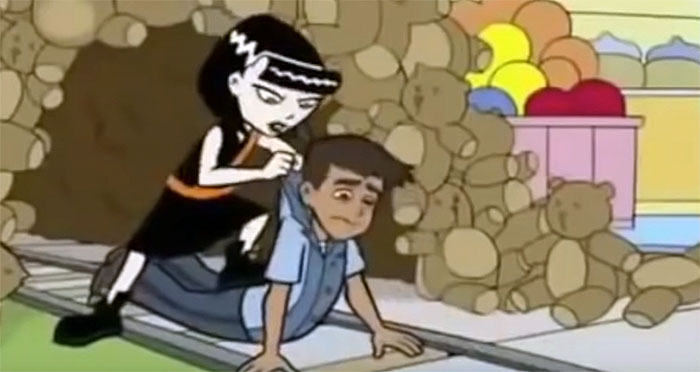
Oscar’s trajectory has a bittersweet ending. His family keeps the train store, and he doesn’t have to move. But he loses the friends and notoriety he was determined to keep after being blacklisted from all local model train groups. As for Fillmore, watching Oscar self-destruct helps him deal healthfully with grief, and get a new fish, Miles. Once again, viewers can focus on exactly how the mystery was solved, and exactly what the protagonists had to work through to solve it. As with “To Mar a Stall,” there’s a method involved–using everything you know about people of interest to get to the truth, and using information that might not seem important to find what is important. With “Next Stop, Armageddon” though, the method is also combined with an arc that looks entirely personal and emotional. The message is clear: solving mysteries, and helping people, takes both head and heart.
Unique Opportunities for Character Growth
The final commendation in Fillmore’s file revolves around the characters’ opportunities for growth. Sometimes, as discussed, this growth relates to redemption, if the characters will take the chances they’re given. Other times, growth relates to Fillmore, Ingrid, and other “good” characters learning about and dealing with the dark sides of themselves. But the biggest growth potential is a type we haven’t covered. Fillmore’s characters grow in more permanent ways than the protagonists of most other cartoons do. Further, that growth lets viewers see who the characters might become outside of the series.
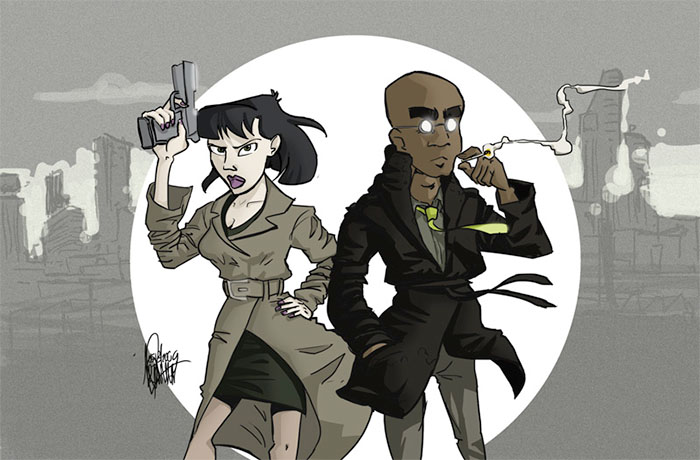
Most animated characters stick to an emotional status quo, at least to a point. They may learn valuable lessons, such as kindness, fairness, or obedience to parents. But those lessons don’t necessarily affect them later on. A character who learns not to tease a minority character in episode one, may still use hurtful teasing in their close friend group during episode ten. A character who learns not to trust a con artist once, may not recognize the same manipulative behavior in another character who isn’t an obvious antagonist. Cornelius Fillmore and his team don’t experience these issues, although the mysteries they solve may put them in the path of similar problems.
One of the best examples occurs in “The Nineteenth Hole is a Shallow Grave.” During this episode, Fillmore directly confronts his past when X’s mini golf team is victimized. Someone’s forcing them to throw matches, particularly during tournaments. After star player Cuzzy Shotwell loses the Mini-Masters on purpose, the safety patrol wants to send Fillmore in undercover, hoping a new player will form a bond with the team and get the members to open up about who’s terrorizing them.
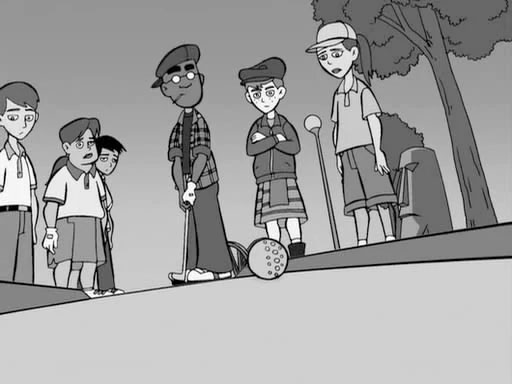
Fillmore reluctantly goes in, but ends up suspecting and interrogating the wrong person. When it looks like Ham Beaumont is the one coercing the team, a high-strung Fillmore jumps all over him, eager to close the case as fast as possible. Unfortunately, Ham Beaumont is not only innocent, but also Principal Folsom’s nephew. She’s so incensed that Fillmore “traumatized” him, she closes the case. Fillmore storms home, refusing to talk to anyone. When Ingrid shows up at his house to press the issue, he initially ignores her.
Ingrid won’t let the issue drop, and points out that whatever Fillmore’s struggling with, his refusal to face it is hurting more innocents–on purpose. She knows it has something to do with Fillmore’s past, but tries to tell him it’s okay to move on. What Ingrid doesn’t know is how deeply one particular instance of Fillmore’s delinquency affected him.
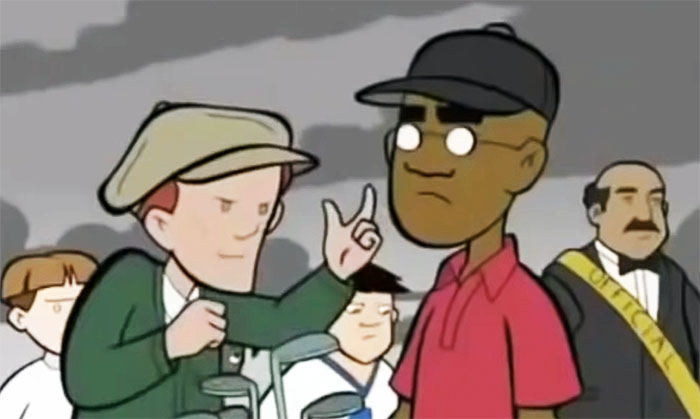
Fillmore explains that back in sixth grade, the mini-golf team wouldn’t let him try out, despite his gift for the sport, because of his “discipline problems.” Bent on revenge, he challenged the whole team to a game. “Ingrid, mini-golf is 100% mental. I used [the game] to break them,” Fillmore says. He gives examples of how he changed his swings and angles to gaslight opponents into thinking the greens broke differently, or obstacles weren’t working, or they had more time than they actually did. Fillmore single-handedly slaughtered the team, and because he bet them “everything they had,” took their most precious and valuable possessions, from trophies to CDs and video games. The whole fiasco is scripted almost as if Fillmore committed multiple murders or adult-level psychological torture. His remorse permeates his monologue.
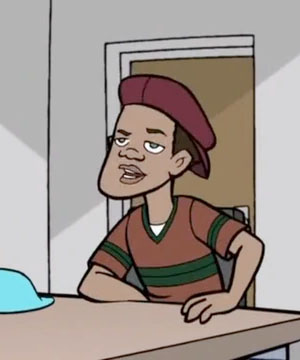
Of course, Fillmore had shown true remorse and repentance for his past before. At least four of the show’s 26 episodes deal directly with his former delinquency or use it in a subplot. At least one, “A Forgotten Yesterday,” presents Fillmore with the opportunity to return to delinquency because of ties to Sonny Lombard, a current student “thug” who was once his best friend. However, “Nineteenth Hole” is the one episode where we see Fillmore facing the associated regret head-on. In this episode, Fillmore acknowledges that, just as he had the choice to continue troublemaking or “go straight,” he now has the choice to heal or let remorse consume him. As Ingrid says, if he chooses the latter, it’s really no different from delinquency–because staying stuck in the past will mean future students won’t get justice. It’s a deep concept for the target audience, and one that pushes them to the next level of social understanding. That is, saying you’re sorry and changing your behavior is a wonderful first step. But failure to forgive yourself means becoming your own inner bully.
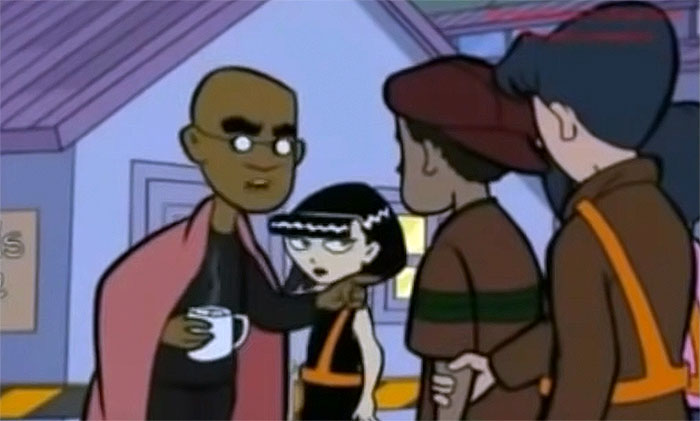
Fortunately, Fillmore embraces this lesson. He not only exposes Ian and Biggie, the “criminals of the week,” but wins the X Middle School Open and the support of a huge crowd–a crowd including students who once saw him as a threat. After the perpetrators are safely tucked in detention, Fillmore also has Ingrid round up the members of the mini-golf team. He meets them on the putting green and returns everything he won from them, after offering a heartfelt apology for the revenge scheme. The mini-golf team accepts. Fillmore doesn’t join them, the implication being he’s too busy with safety patrol matters and might still have a little healing to do. But he does gain a new friend group, and makes a permanent break with his past, as well as real, meaningful restitution. Almost no animated character has done this, so Fillmore’s arc was groundbreaking for its day. Twenty years later, it’s still a rare find, and a jewel in Disney’s animation crown.
What Should a New Fillmore! Look Like?
As mentioned, it’s not far-fetched to suggest Fillmore! will eventually get a reboot and revival. However, the “commendation file” reveals any new version of the show will have some huge shoes–or quite a large safety patrol belt–to fill. This in mind, a reboot that’s actually good might seem impossible. Yet as Walt Disney once said, “It’s kind of fun to do the impossible.” Fillmore! can return to its “beat,” and become a hit for new generations of kids and adults, if it keeps some key tips and suggestions in mind.
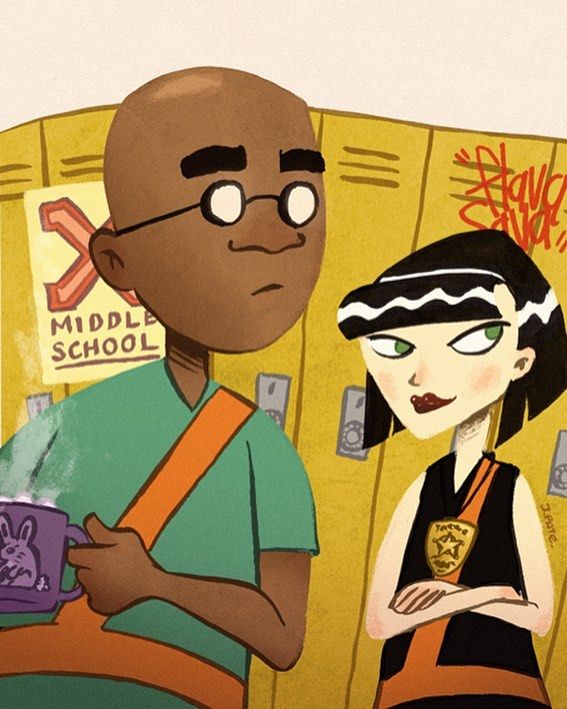
Expand the Environment
Expanding Fillmore’s environment sounds unnecessary or impossible at first, because X Middle School is already so huge and multifaceted. However, a new Fillmore! could take advantage of expansion if that expansion were done well. For example, in a new Fillmore!, we could assume Fillmore, Ingrid, and the other characters are a little older. Perhaps they have moved to late middle or early high school; perhaps X could expand into a junior-senior high. Additionally, the creators could take time to show what kind of school the new X is. That is, former and current fans have questioned parts of X’s makeup–“Do these kids ever go to class? Why are there so many clubs, and how does the school sustain both classes and activities?”
One theory posits that X Middle is a “free school” or specific type of alternative school. In such schools, students are required to attend classes, but they have a lot of control over their schedules, and they attend mostly classes that interest them or serve their gifts. If the creators specified that X is this type of school, it would clear up how and why the characters move and act as they do. Such clarification would also allow the characters to move even more freely than they did in the original series. For example, the safety patrol would still have headquarters, but in a “free school,” the patrollers could conceivably meet and exchange information in other places or at other times. Similarly, and especially in 2022, the characters could be doing part or all of their classwork online. In other words, they can work wherever there’s a computer and connection, and multitask when necessary.
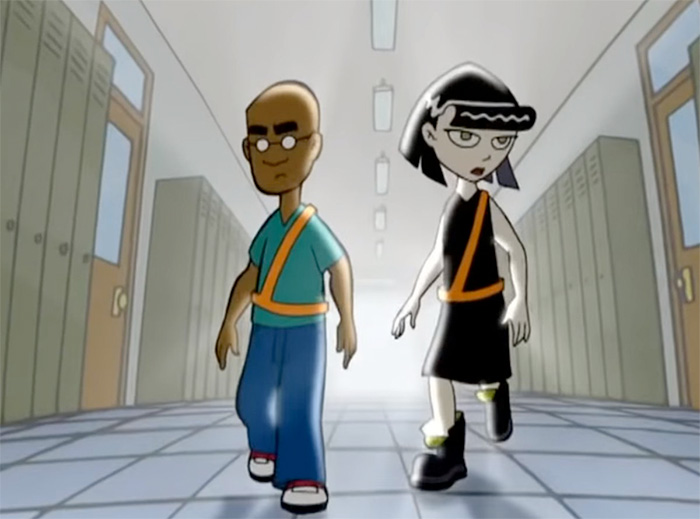
Other ways to expand the environment take their inspiration from classic episodes. In a late episode, “Field Trip of the Just,” Fillmore was sent off campus to catch a perp, armed with a “platinum pass” from Principal Folsom that proved he wasn’t skipping school. A version of the show with a slightly older cast begs for more off-campus opportunities. These could be tied directly to crimes within the school, or they could be tied to extracurricular trips, conventions, meetings, and so on. Additionally, off-campus opportunities could feed into subplots and character development. For instance, we’ve never seen Fillmore, Ingrid, or any other safety patrol member participating in another extracurricular. Suppose one did, and suppose he or she had to choose between the safety patrol or the new activity? The pressure to choose could be the background for a multi-episode arc, and perhaps potential burned bridges. That is, the pressure to choose might actually push the character away from the safety patrol and toward crime, as seen in “Red Robins Don’t Fly.”
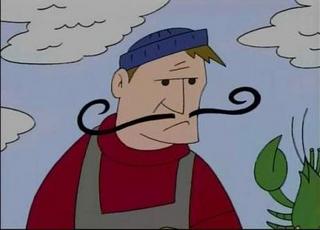
More inspiration comes from the episode “Masterstroke of Malevolence.” This season two episode marks the first and only time Fillmore and Ingrid dealt directly with an adult culprit. Of course, that’s because middle-schoolers are not physically or emotionally equipped to deal with adult criminals, so this would need to be handled with utmost care. However, it could be done if the arc were serious enough, and the crime were handled gently. In other words, it would be inappropriate for Fillmore and Ingrid, even as high-schoolers, to investigate a teacher accused of fraternizing with or abusing a student. But if that teacher were say, “fixing” grades of certain students while still acting friendly, open, and fair, student investigators wouldn’t be out of bounds. Student investigators wouldn’t be the ones to call on if the city council or board of education were cooking the books to harm X’s budget. However, if a student came to the safety patrol with a “tip” that their parent was using power inappropriately, Fillmore, Ingrid, and others could easily go to their teachers or the principal and ask to take part in solving the situation.
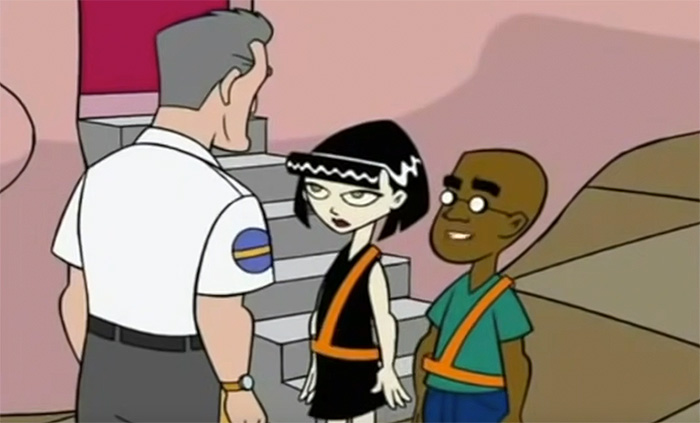
Finally, expanding the environment could mean taking mystery-solving skills into the world outside of school or school-affiliated activities. As early high school students, Fillmore and friends would shift their focus toward young adulthood. They would be exploring such new frontiers as college and the workforce, serious dating relationships, and conflicts with adult nuances. Thus, it might be interesting to explore plots that occurred while a character “shadowed” an adult mentor on the job, or crimes that occurred because a “power couple” broke up. Fillmore and Ingrid could also move from focusing on actual crimes, to “crimes” of personal development. For example, our protagonists could be instrumental in helping classmates conquer burgeoning addictions or eating disorders. They could be the ones sticking up for mentally ill classmates written off as “troublemakers” or “dangerous.” Again, such plots would need deft handling; it would be inappropriate and triggering to say, have a student attempt suicide or hide a gun in their locker. But if Fillmore, Ingrid, and others could look at a threat and say in Fillmore’s words, “Dawg, this is leading somewhere bad,” serious plots could be doable.
Keep, and Explore, Diversity
One of the best parts of classic Fillmore! is its almost effortless diversity. A new incarnation must keep said diversity if it wants to succeed. More importantly, that diversity needs expansion and exploration, particularly the kind that’s appropriate for an older audience. The creators should also be careful not to fall into tired or trite plots.
Identity-Based Diversity
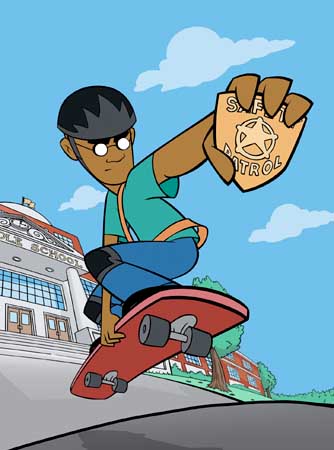
The 2020s throbs with examples of identity-based diversity, or diversity based on external or cultural traits (race, nationality, religion, disability, and so on). People of all ages, but especially kids and students, are intensely in touch with and aware of their diversity, and they want to see it represented. The cast of a new Fillmore! should be no different. The problem is, if the creators aren’t careful, plots revolving around identity and diversity could fall into some pigeonholes. For example, an episode about hate crimes might be okay, but the risk is that X would read as an environment where minority students aren’t safe. An episode revolving around identity and an anti-bullying campaign might work, but the message might become, “Diversity, or identifying as part of it, makes the person primarily a target or victim.”
If a new Fillmore! explored identity-based diversity, it might do well to avoid bullying altogether, unless it were part of a wider problem (hate crimes hitting several different targets, an anti-bullying campaign that flopped because the traditionally “targeted” students did not want it). A plethora of other options exist. For instance, perhaps X hosts an inter-faith club who has just been gifted an important object, such as a replica of a relic or an opportunity to go on a big trip. But, the object or money for the trip, has been stolen. Perhaps the safety patrol has begun an initiative similar to the Innocence Project, to try to stop innocent students from being suspended or expelled. But some students, particularly Black, Brown, or multiracial, feel they are either underrepresented (their innocence is not proven), or over-represented (why is every “success story” a Black or Brown student; why was a big case involving a Caucasian student or Asian student not given attention)? Or perhaps a disabled student works with a safety patrol member to help solve a crime, and then decides to come onboard full-time, perhaps as a profiler (assuming former profiler Frank Bishop has graduated).
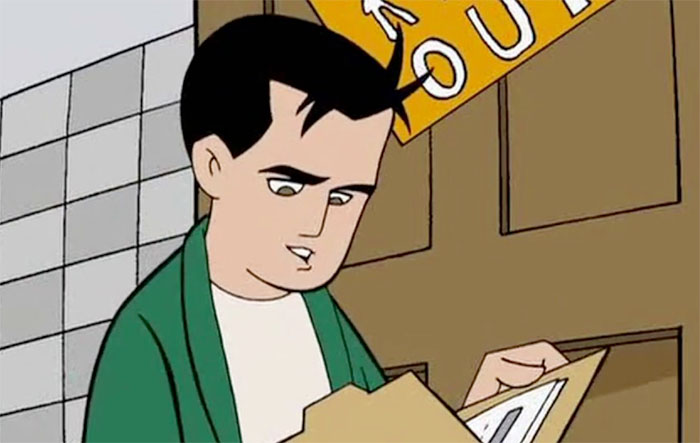
Interest and Opinion Diversity
Today’s teens and preteens are more politically engaged than ever. This doesn’t mean that a new Fillmore! should capitalize on this; parodies of people like Obama, Trump, Biden, Pelosi, and others would take the show into a potential firestorm. But in the classic Fillmore!, we did see students with strong and potentially minority opinions, who were received in different ways. Vocal vegan Stella Valencia, for instance, never got fair treatment from Principal Folsom, her teachers, or even other students. Innocent suspect Ralph Eddy, as noted, was a train club member but hid his passion for RC cars and new technology from his sometimes rabidly Luddite club-mates. X Middle School also hosted some time-honored rivalries in the background, like the Dog Lovers’ Club vs. the Cat Fanciers.
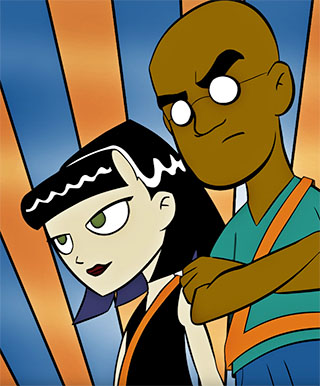
These rivalries and deeply held interests could be “aged up” into political or social conflicts still appropriate for a preteen or early teen audience. For instance, the safety patrol has never dealt with any type of school election, and everything from mudslinging to vote-buying to ballot stealing could be fair game. Less “obvious” examples might pit rivals against each other, but also force them to work together. For instance, perhaps dog lovers and cat fanciers participate in pet therapy at a local nursing home, hospital, or therapy center as part of their grades or college prep. Favorite animals in danger, and discouraged or depressed clients, would cause frustration and accusations. High academic stakes would make the conflict worse. But such a crime would also force the rivals to focus on bigger issues. Their rivalry could stay in place, but undergo “character development,” even if only, “We call truces when necessary. Until then, our pet representative is better, and the other group can shut up.”
Interest and opinion diversity would not necessarily be clear-cut, either. For instance, the amount of attention Science, Technology, Engineering, and Math (STEM) has received in recent years has inspired this writer to ask, “What about English and the humanities?” Indeed, although STEAM includes Art, this writer went through a late school experience (eighth grade on) where she saw classmates gifted in STEM given opportunities that she herself could not get because the visual components of her disability made some forms of STEM prohibitive. She remembers wishing students gifted in English, theater, history, art, or music could constructively be heard.

An expanded junior-senior high like X would be a great place for a conflict like this to happen. That is, STEM and STEAM students could conceivably “go to war.” Said “war” might even be sanctioned, because it could begin as a fund-raiser, morale booster, or celebration of X’s diversity. But if a student or teacher were hurt, if students switched sides, or if there were “moles,” a mystery could easily take over. A plot like this could also feed into a multi-episode arc, with many whodunits who have complex motives. Or it could be that nobody “did it,” which would open up a different kind of conversation about who gets “privileged,” when, why, and by whom.
Bring New, Tougher Heroes and Villains on Board
As kids get older, they mature physically, emotionally, mentally, and socially. By the time they’re Fillmore and Ingrid’s ages, they’re ready for bigger challenges in all arenas. They can think abstractly and predict long-term consequences, and they can often problem solve in innovative ways the generations before them might not have thought of or been able to access. The best way a new Fillmore! could show this would not only be through more complex crimes and plots, but through new challenges that take the form of characters.
The core group–Fillmore, Ingrid, and the safety patrol–should provide an ahem, safety net for viewers, even as they change and grow. But it would also be a good idea to bring in new patrol members or give secondary characters larger and more frequent roles. Some fans have wondered, for instance, what happens after Vallejo graduates. If Fillmore were tapped to take over as junior commissioner, how might he handle the new responsibility? Or, if an entirely new commissioner were brought in, how would the safety patrol change? Alternatively, a safety patrol member could leave for another school but still check in with the rest of the cast via Zoom, which could unite the familiar cast with some new characters. There could be new “beats” at different schools, in a sort of callback to “South of Friendship, North of Honor,” wherein Fillmore visited an old partner over spring break.
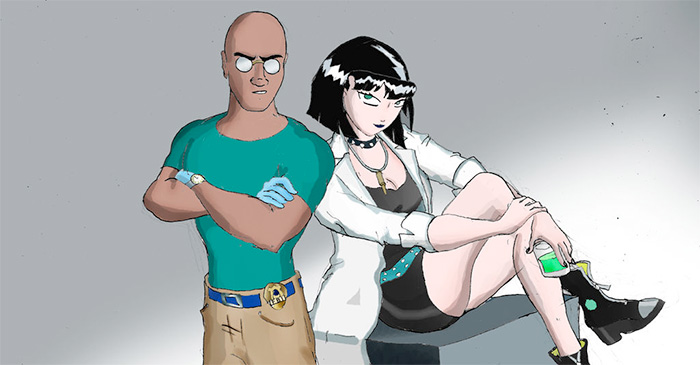
A new Fillmore! could also bring on different types of heroes. Not every “good” character need be in the safety patrol or closely associated with it. For example, if our protagonists are in early high school, it’s likely upperclassmen are mentoring them in various forms. Mentors might be consulted on certain cases. Thus, our protagonists could avoid the dependence on adults that young viewers tend to dislike, but the show wouldn’t fall into the Adults Are Useless trope, which occurs when adults are more hurtful than helpful or just don’t care. Alternatively, if a teacher or staff member were well-liked and well-developed enough, he or she could guest star, too. Or we could probe into whether the characters we know have friends in outside environments such as a house of worship, a community theater, or a traveling sports team not affiliated with X. Those characters could become heroes, suspects, or a mixture of both.
Every hero, or group of heroes in our case, needs some good villains. The classic Fillmore! has given us some great ones, made memorable because in most cases, they weren’t completely “bad” kids or adults. They were, instead, mostly hurting people, who hurt people. A new incarnation of the show should keep this firmly in mind. Villains should always have complex or surprising motives, whether they’re students or adults. The classic 26 episodes tapped into a lot of these, as with Kip Fontanello, Robin Spencer, and Oscar Guerrero. Episodes aimed at older audiences could take these to a new level. For example, the desire to please and live up to an older sibling, as seen in “Links in a Chain of Honor,” could become more serious if that older sibling were a gang member or leader who had been expelled from X or injured seriously enough to warrant leaving gang activity. A computer or video game addiction, as seen in “A Cold Day at X” or “South of Friendship, North of Honor,” could be “aged up” to a serious addiction that causes physical or emotional illness. It could, with deft handling, have nods to a porn addiction (nothing shown onscreen). The desire to “make a statement” based on personal beliefs could take the form of revenge against the whole school, perhaps through social media misuse or the use of fires, floods, or chemicals.
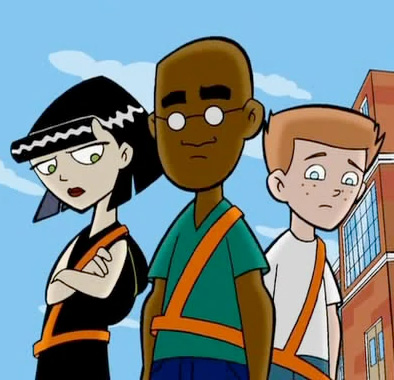
In addition, a new version of Fillmore! could and probably should pit our heroes against the occasional adult villain, or recurring adult adversaries inside the school system. The classic episodes had Principal Folsom, who was a competent administrator but so entrenched in rule-following and her own success, she couldn’t always appreciate others’ points of view. One episode, “Field Trip of the Just,” also had truant officer Langley Turk, a buffoonish yet verbally abusive adult who had it out for Fillmore in particular, even though the latter had cleaned up his act. Occasionally, a teacher or parent would fall into this camp, too. Mr. Geary, for instance, called Fillmore “a lost cause” for as long as the two knew each other. And although we rarely saw parents onscreen, we saw the aftermath of what bad parenting could lead to. Rookie safety patrol officer Peter Chestnut came from a family that believed their name was synonymous with success at any cost. Patrol Sheriff Thrift, the “dirty cop” from the Tennessee school Fillmore’s old partner attends, had a principal dad who protected his son from any and all consequences. This only worked until a schoolwide crime blew up in both their faces.
The new version of Fillmore! could end up with a plethora of adult villains with depths to probe. An obvious choice might be a new principal who’s more obnoxious and rule-driven than Folsom. But, the creators could put a twist on this. Perhaps Folsom could still be X’s principal or demoted to vice-principal. If the former, she could become a more sympathetic character who recognizes her students are more mature–or a less sympathetic character who now rules with a high school “co-dragon” administrator at her side (rather than the rather ineffectual VP Raycliffe). If the latter, Folsom could actually enlist her students’ help in subverting a system she feels is too draconian. Again, she would then be a more sympathetic character.
Other adult characters could, and should, leave villainous legacies, too. As mentioned, a particular teacher might be sneakily unfair or abusive. Another teacher might be the victim of adult bullying, and might stand to get fired because of faculty members who deliberately misconstrue the victim’s actions. A disgruntled elective teacher might go rogue in order to prevent budget cuts or take revenge on school members treated with more respect. A bus driver might be accused of a DUI with students on board, or placing students in danger during inclement weather. A cafeteria or custodial worker might use their knowledge of the school’s inner workings to try to take revenge on an adult, only to harm students and experience remorse. The possibilities are endless, and they challenge our protagonists to use their skills and empathy to win the day for the side of good. They also challenge protagonists and viewers to think more deeply about the world, the people in it, and how best to cope when the school bully or the mean teacher becomes someone on your level, who you have to interact with every day, who will not get expelled or sent to detention.
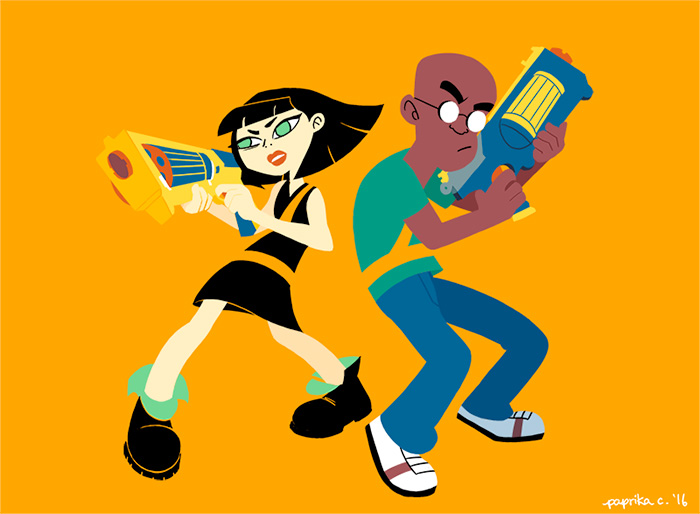
Getting Fillmore! Back on the Beat
Scott M. Gimple’s 26-episode creation Fillmore! has sadly disappeared from the minds of many millennial viewers. Its short tenure almost guaranteed it wouldn’t see daylight after its cancellation. Yet nineteen years after its last episode in 2003, Fillmore! retains a small, yet vocal and appreciative, clutch of fans. Well it might, because this show proved itself brilliant on many fronts. In an era of almost constant reboots, Fillmore! deserves a second chance. If it received one, and was done well, it could become one of the biggest hits Disney animated shows have ever seen.
What do you think? Leave a comment.
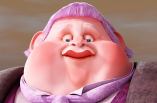
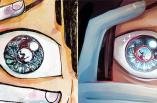



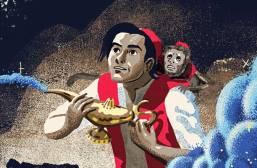

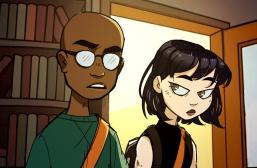



I loved Fillmore as a kid and as a teenager. It was one of the cartoon lineups I looked forward to in the afternoon, after school. Excellent article and defense of a forgotten show.
I’ve been waiting too long for a reboot…. I’ve stopped waiting already. They clearly have other programs they want to be pushing and it sucks
I recently rewatched this with my nephew and it’s sad so see it only ever had 2 seasons the voice talent in the show and guest voices alone should have kept it afloat but sadly like anything else decent that disney does it gets cancelled, very sad. we need this and Hey Arnold back on tv for kids to be spoken to as equals and not treated as dumb kids all the time.
From my understanding it wasn’t cancelled but made to fit a two season slot. It was widely successful too!
Rewatched? Where did you get the episodes? I’d love to have this show on digitally or on DVD or even on VHS.
Last time i saw the series the eps were in youtube. this was like a year ago.
Episodes are still on YouTube.
It makes me insanely happy people still talk about this show!
Why was Fillmore so good? Because as stated in the article, it was about dealing with real issues. With characters, even so called villains you could relate with. Each character had his or her own backstory. It always had a good moral at the end, without coming across as being heavy handedly “preachy”. That’s why I believe it was a good show.
So I watched this show years ago, and a few months back I finally remembered it and decided to take another look at it on YouTube. It… was way better than I remember. I think what makes it work is that, even though the premise sounds incredibly stupid and cheesy, the show takes itself so seriously that you can’t help but do the same. The idea that a middle school is treated like a small city with the principle as the mayor; again, it sounds stupid, but it knows exactly what it is and just runs with it, and that makes the show work. Definitely worth a watch, whether you grew up with it or not.
Disney was pretty good at treating schools as a city or a random place to be. Check out Recess. With people like a King, and a Hustler kid, and a pen to keep the animals/kindergardeners out is all you need. It souds stupid but it’s actually really a creative way of telling kids how the world works.
My boy was bald in 6th grade. Loved Filmore though, show was fire.
This show was over before I was even born, but it’s all on YouTube, and I decided to watch it last summer after discover the dry chicken clip through my YouTube recommended, and damn was it awesome. This show needs a revival.
Filmore was my favourite sick-day show, they just had like 2-3 hours of it on throughout the daytime block.
I wish so badly that they’d put this on a streaming service! It never got a vhs or dvd release though, so Disney clearly doesn’t want to remember it that fondly. The voice actress for the Principal is actually playing the witch in Owl House, using the same voice!
I didn’t grow up with Filmore but this article has definitely convinced me to give it a watch. Well researched and well articulated!
For some strange reason, the only thing I remembered about Fillmore was the Tartar Sauce Thief.
See, this is my kind of show. Well made enough to be connected to reality. We gotta have some scify shows well written enough to do the same. Trust me, it’s not that hard these days. A lot of the concepts are being put into place by now.
Fillmore! I loved this show growing up, made me want to be a hall monitor or part of the safety patrol, but then found it was nothing like the show. sigh But all the same I really liked this show and it made me curious about how this stuff works, I feel this show was a good way to introduce kids to not only the rules of law enforcement but the way the world is gonna be at times. Hell its probably because of this show that some of my favorite television series is Bones, Criminal Minds, NCIS, and Castle. I always liked trying to figure it out myself. I even at one point considered being a profiler, I probably could still be good at it if I wanted. Man now I need to find the episodes something tells me its just as good when your a little older.
Fillmore is probably one of my favorite disney cartoons. I’m always happy when I see people talk about it, because it seems to have kind of gone unnoticed a lot of the time. Fillmore was a lot of fun, and it did a good job making stories about things kids care about.
I love Fillmore!, I used to watch it all the time when I was a kid, mostly because I’ve always loved detective stories and the mystery/case-solving formulas, but I think only recently while rewatching it I realized that it was also very good because, while the premise isn’t 100% realistic, it has these bits of totally realistic social criticism and valuable lessons in it, it’s a show that plays a lot around the ethic and personal morals of the characters in a very sarcastically mature way.
Another episode that I love is the one where Fillmore is trying in every way to prevent some students from stealing the answers for a test they have planned for the day after and that the teacher purposefully decided to leave in the classroom so that the kids could choose whether to read them or not, and Fillmore doesn’t believe in the teacher’s idea at all at the beginning, but in the end he understands how powerful letting people have a choice is and quits trying to stop the kids, which brings them to analyze the reasons why they wanted to steal the test in the first place (this goes back to the theme of test pressure I guess?) and eventually to decide not to cheat after all.
It makes me sad that it only lasted a season, I still feel like seeing the characters grow up and their ideas evolve even more would have been great.
I remember the episode about the teacher who gave the students the choice about stealing the test. It was a good one, although I can’t help but feel as though, as with the rest of the series, the whole thing was really an allegory for a dilemma that an adult would be in.
Ingrid is the reason why I name my rescue female cat Ingrid in the first place.
So sad remember waiting longer for season.the 3 that never came.
Fillmore! ain’t the only the Disney cartoon that’s forgotten there are lots of other forgotten Disney cartoons like Lloyd in Space, The Weekenders, and (what the kind of idiot could forget?) Teamo Supremo. Heck, they all should be added onto Disney+.
And Jungle Cubs, Timon & Pumbaa, 101 Dalmations the TV series, Teacher’s Pet the TV series, Hercules the TV series, Buzz Lightyear of Star Command, The Mighty Ducks the TV series, Shnookums n’ Meat Funny, Marsupilami, Pepper Ann, The Emperor’s New Groove the TV series, American Dragon: Jake Long, and Raw Toonage, to name a few!
A bunch of classics right there.
Anyone else wonder why all the criminal kids ran when they were accused of their crimes. The Safety Patrol knew their identity and had evidence against them. Even if they got away the school would’ve called their parents. They’re kids not adults so they have to return home and to school eventually. Also how is it they have the world’s most overfunded public school? They had a 100 different clubs, a newspaper, a news television station, and an indoor *&^%ing botanical garden!
The world didn’t deserve Fillmore.
This show is probably the reason why I love Jazz.
If Disney released this show (and many others of its time) on Disney+ or on blu ray they would literally make millions.
Back when Orlando Brown was the man on TV!
For sure. He was a really talented actor.
It’s Sad that Orlando Brown is the exact opposite of the character Filmore, he’s voice acting here by doing drugs that got him arrested and messed up.
Fillmore was one of the best cartoons they ever had I wish it gotten more than two seasons I would have loved to see them do more storylines like for example give some of the side characters a shot this spotlight like O’Farrell the comedic relief guy and part of me would like to see an interest in Fillmore and Ingrid’s relationship going past just partnership and friendship if you know what I mean I mean Disney are even trying to bring back some of their older cartoons like the proud family but I doubt they’ll bring back Fillmore especially during the delete after that place Fillmore Orlando got arrested a few times.
I believe that when kids watch show like this, they unconsciously learn valuable things for life, like the difference between good and evil. But nowadays kids watch YouTubers and shitty TikTok videos, learning absolutely nothing about life.
its funny because you show this or hey arnold to them and half get bored and dont care, but the other half actually start watching and get into it big time.
People hate generations older and younger than them but generational stereotypes don’t apply to everyone. Every generation has some amazing people in it and some stupid people but most of us are irrelevant, unremarkable, and unimportant.
I’d argue the same with early DBZ and DB.
Main characters got so much damn style!
Most def. Those sunglasses have materialised on my face and my internal monologue has a jazz theme.
Thanks for the coverage. This show hasn’t gotten the ability to shine. I can see a lot more potential in Fillmore, it’s sad Disney forgot about it.
Think about it, Fillmore isn’t available to buy anywhere, the show isn’t getting streamed on any legal websites (including Disney+ sadly) and the only times it did air on TV, it lived in the shadow of Recess. Every single person I know that watched the show absolutely loved it, the only reason why this show was cancelled that I know of is that it didn’t perform as well as Disney hoped. Absolutely disappointing!
YES!! I love Fillmore and I’m hoping Desney+ will bring it out onto their platform. Thanks for this article. EVERYBODY needs ot know about Fillmore and how great it was.
You have illustrated a certain charm to Fillmore that an adult audience can definitely appreciate and I think has been understated and under-appreciated. Good job!
I remember watching Fillmore! when it aired. I liked it a lot, but a reboot, particularly one that aged the characters, probably wouldn’t work very well. The entire premise of the show was that it featured kids doing things that, in real life, only adults typically do. This worked on two levels at the time, because kids could relate to the young cast and adults could appreciate the complex, “adult” decisions that the cast members made. If the cast got older, though, the line between the kids and adults would become blurrier, and there is a danger it could eventually turn into just another “teen” or “young adult” soap opera. Or else it would turn into one of those “kid shows” where everyone acts like overgrown elementary-schoolers and is obsessed with school even after they should have moved on.
Put another way, it makes sense that middle schoolers, who spend most of their lives going to classes in school, would view the school as their entire world, but once the characters enter high school, learn to drive, and get more involved in the wider community, if they continued to fixate on their school it would just start to look ridiculous. This is actually sort of what ended up happening with Harry Potter–even though the main characters were (in some instances) legal adults in the last book, the final battle still had to take place at school, and the protagonists’ main mentor and inspiration was still the teacher that none of them wanted to cross when they were twelve.
I miss this show. Hope they will bring them to disney plus. And Weekenders. I miss that show too.
Don’t forget House of Mouse and Mickey Mouse Works. Also Lloyd in Space.
Honestly this show made me a better person, it really put into perspective that people doing bad things might have a good reason. Made me a lot less quick to judge people.
I love this show so much and this was a really good retrospective of it hopefully we can get a continuation for it someday.
Watching this in early primary school days it encouraged me be a spy in my neighborhood lol always had my small book and went sneaking around after the show. It was one of my all time fav shows growing up.
Wow, thanks for writing this. I remembered seeing this show on tv as a kid
I’m glad I’ve watched it now cuz this show was super smart.
Let’s start a petition to get Fillmore on Disney+!
Great breakdown of a great show.
I wish I was born earlier… I missed many good years.
Gutted that this isn’t on Disney+.
This is one of my favorite shows, I wish they would bring it back!
Looking back at this show today, I think it’s really noticeable how diverse the cast is. The two main characters are both people of color, so is Tehama and Vallejo. The only unambiguously white characters in the main cast rotation are, I think, o’Farrel and Principal Folsom.
The show never talks about it, though. I think the only time it’s ever brought attention to that some of these characters have foreign or mixed roots is one sentence where Ingrid reveals that she knows Japanese. The characters get to be characters first, and their diverse backgrounds are a completely secondary topic.
It’s interesting. I’m not sure I’m entirely comfortable calling this an example of diversity “done right” since I’m always a bit suspicious of the charge of “forced diversity”, but I definitely have to give this show props for just having such a diverse cast, racially speaking (not much if any queer or nb representation here. Not a criticism, just a distinction).
Was feeling nostalgic and wanted to read some reviews of Filmore and DAMN! This is so in depth there were many things that completely went over my head.
I think this was the first series to showcase Tara Strong’s new and mature voice because it dropped after the powerpuff girls movie.
I loved watching Fillmore when I was a kid (mostly on Toon Disney). It was different and unique, but it was funny and fun. And it lasted well, despite its short run.
Plus Ingrid Third’s really hot.
Ahh, Fillmore. Not exactly the most deep or revolutionary Disney show, but they had an interesting premise and ran with it.Also, yeah, Disney seems to have some sort of rule with most of their shows where once they reach a certain number of episodes, the show gets cancelled. And since this is the company that dilberetely makes DVDs of some of their most famous movies hard to find to increase the sales value, it only figures that they pretty much burry most of their shows once they are old enough. Good news if you were sick to death of Hanna Montana, bad news if you want a full DVD set of the entire series of Gargoyles.
This looks more like a early MTV show.
Fillmore was middle school Batman.
I love this show! I was so sad when I heard it was cancelled! Same with Dave the barbarian!
One of the things I loved about the show was Ingrid and Fillmore’s banter. The conversation between them after catching the chest sheet culprit was good enough to make me play it twice in a row.
I actually completely forgot that this show existed. I remember watching it and enjoying it but not much more than that.
Man, how relevant today some of these Fillmore episodes can be even though these were aired early 2000’s. This was my pre-teen guilty pleasure series for the glorious 2 seasons it had.
I wish this show had more continuity and an ongoing narrative.
Fillmore was my childhood, I absolutely loved it.
You get a new show that’s really good, but it’ rare if it out lives the current bad shows, just gotta be thankful of the good shows that are still going.
Fillmore would have been a good IP for Telltale to have made into their style of game… You know, before they fell apart.
I remember Fillmore but although it was pointy it was just too ridiculous with the concept for me. I’ve never liked it when they over-dramatize high school and that largely killed it for me.
Wonderfull. I really loved it. Filmore is just my childhood cartoons. I loved them. Thanks for sharing a memory.
As an elder Millennial, I do feel bad admitting I do not remember this show, but I agree that challenging authority in a constructive way is teaching young children that it is not okay to allow someone in authority to abuse their power or show favoritism.
The show was ahead of it’s time in many respects. I particularly liked a fact that you pointed out — that characters weren’t as confined to generalized archetypes, and presented as more multidimensional. Shows– particularly shows designed for non-adult audiences — often can fall into the trap of pigeon holing their characters into one defining trait and running with that label for the sake of ease, or under the guise of preventing confusion. Children don’t fit into boxes, however, and I think younger viewers aren’t always given enough credit in being able to understand things aren’t always cut and dry, black and white, good and bad. Having characters present with differing arcs, conflicting interests, and moral disagreements within their own identities is something the show did well. Adding the broader representation (especially for it’s time!) really makes this show one of a kind for the nostalgia books, and contributes to it continually being re-watchable to this day!
I thought I was the only one that remembered this show! I’m surprised that it hasn’t been revived in any way, it has great potential in many aspects: a positive portrayal of a young black man, the platonic male/female friendship between him and Ingrid, the power of deduction and critical thinking, etc. Disney is really sleeping on this one!
I can’t believe I never heard of this show before! Some shows got reruns so frequently you couldn’t miss them if you tried, and then there’s others completely off the rerun radar! This absolutely had me intrigued, and I checked out the first episode on Youtube. There were also some really solid ideas for new and current episodes listed here, I could absolutely see a revival as relevant as the original felt in its time.
I loved Fillmore as a kid! Wonderful to read such a thorough article about it. Feel like watching it now.
Love Fillmore ! I will never stop searching to own this show , but for now I’ll stick to youtube and watch it just about every year !
LongLiveXMiddleSchool